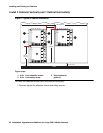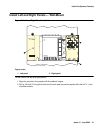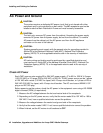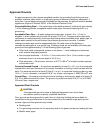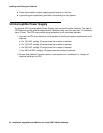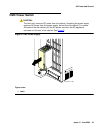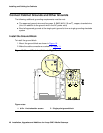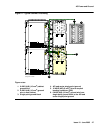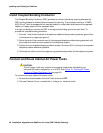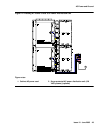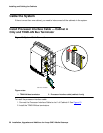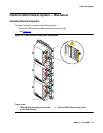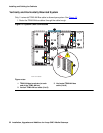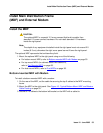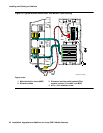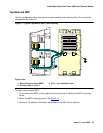
Installing and Cabling the Cabinets
48 Installation, Upgrades and Additions for Avaya CMC1 Media Gateways
Install Coupled Bonding Conductor
The Coupled Bonding Conductor (CBC) provides for mutual inductance coupling between the
CBC and the telephone cables that are exposed to lightning. The conductor can be a 10 AWG
(#25) (6 mm
2
) wire tie wrapped to the exposed cables, a metal cable shield around the exposed
cables, or 6 spare pairs from the exposed cable.
In a high rise building, connect the CBC to an approved building ground on each floor. To
provide the coupled bonding protection:
1. Connect 1 end of the conductor to a telephone cable building entrance protector ground that
is connected to an approved ground.
2. Route the rest of the conductor next to the exposed telephone cables being protected until
they reach the cross-connect nearest to the telephone system.
3. Position the non-exposed telephone cables at least 12 inches (30.5 cm) away from exposed
telephone cables whenever possible.
4. Terminate the other end to the single-point ground block provided for the telephone system.
Connect and Route Cabinet AC Power Cords
!
CAUTION:
CAUTION: The AC power cords may connect to a properly rated power distribution unit,
individual AC power receptacles, or to a UPS. See Figure 12: Routing AC Power
Cords to a Power Distribution Unit on page 49.
To connect and route cabinet AC power cords:
1. Be sure the circuit breakers at the AC load center are OFF.
2. Connect Cabinet A to an “unswitched” or “always on” electrical outlet.



